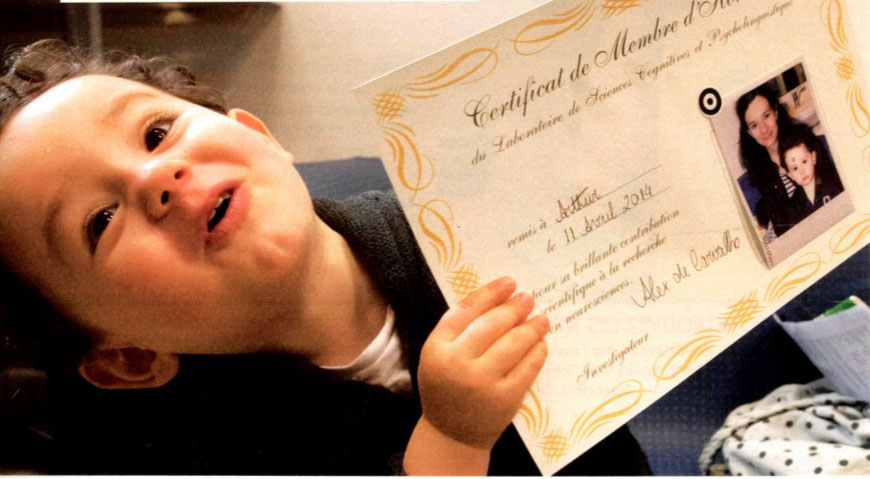
Learning a mother tongue: A universal process ?
At the Laboratoire de sciences cognitives et psycholinguistique (CNRS/ENS/EHESS), specialists in language development in children have studied a traditional population in the Bolivian Amazon, the Tsimane,[1] in partnership with bio-anthropologists from Toulouse 1 Capitole University[2] and the University of California at Santa Barbara. Their study, published on November 2, 2017 in the journal Child Development, shows that, on average, less than one minute per hour is spent talking to children under the age of four.
Reverse engineering infant language development (general theme)

Infants learn their first language effortlessly, without explicit supervision, while being immersed into a complex and noisy environment. Infants do not seem to follow a hierarchical order (sounds, then words, then sentences) as adults would do, but rather, they start learning all of these linguistic levels in parallel.
En fait-on trop avec le genre ?
Franck Ramus (LSCP) était l'invité de Hervé Gardette dans l'émission "Du grain à moudre sur France Culture" le 17 octobre 2017.
Cognitive machine learning
Brain-inspired machine learning algorithms combined with big data have recently reached spectacular results, beating humans on specific high level tasks (e.g. the game of go). However, there are still a lot of domains in which even humans infants outperform machines: unsupervised learning of rules and language, common sense reasoning, and more generally, cognitive flexibility (the ability to quickly transfer competence from one domain to another one).
Cognitive development and pathology
Team's current news
September 2022: Lilas Gurgand and Erva Kandemir are starting their first year of PhD. Lilas will work on sex differences, gender bias and school achievement, notably in the Elfe cohort. Erva will work on learning memory in medical students.
Language acquisition across cultures

International networks
Subjective correlates of cognitive mechanisms
We focus on three main aspects, that we approach with the methods of experimental cognitive psychology : Our first line of inquiry is introspection, its scope and limits, as it is the cognitive function that enables us to subjectively know ourselves. We seek to understand what are the mental contents and processes that are introspectively accessible, and, reciprocally, what are the blind spots of introspection. Second, we try to understand the structure of the stream of consciousness in relation to executive functions. How and why does our attention fluctuate ?
Brain and consciousness
We are especially interested in how conscious and unconscious processes differ at both the psychological and neural level. We use various behavioral methods (e.g., priming, psychophysics) and brain imaging techniques (e.g., fMRI, EEG) to study how humans process things unconsciously (e.g., as in situations of subliminal perception, sleep or hypnosis) and compare it to situations of conscious processing.

